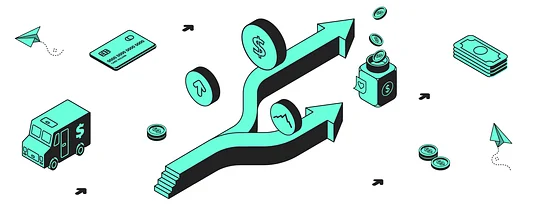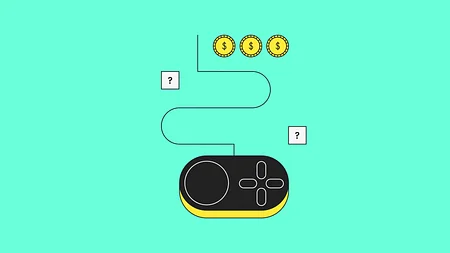The future of banking: all paths lead to lending

We were lucky enough to catch up with Ben Metz, Head of Digital at Jack Henry. Here, he predicts who’ll come out on top in the banking war: the traditional players or the challengers, and what will decide who wins and loses.
P.S. Have you watched our brand-new video series, Decoding: Banking as a Series, yet? Check out the first episodes on YouTube and sign up for instant updates on new episodes.
Let’s get this straight: despite their inroads in the UK and Europe, challenger banks aren’t a challenge in the US. Not to megabanks - not yet, anyway.
Challengers are, however, a clear and present competitive threat for smaller incumbents, including (and especially) the thousands of community banks and credit unions that comprise the vast majority of our financial institutions stateside.
During crises like the one we’re experiencing now, consumers crave what (and who) they know: what feels safe, comfortable and familiar. That’s why incumbent banks and credit unions in the US have enjoyed a 14% rise in deposits during the pandemic, and why megabanks won a disproportionate share of those deposits as a result of spikes in digital banking adoption.
And while challenger banks like Chime and Varo are currently winning new customers at an impressive rate, it’s unlikely either will unseat our mega banks with their massive trading desks, technology budgets and network scale.
American megabanks saw double-digit spikes in trading revenues during the second quarter. Our four largest banks hold 86% of the derivatives market here. And while these windfalls won’t be enough to fully offset the decline in interest income from the recession, they definitely buttress our biggest incumbents relative to challengers and community financial institutions reckoning with the same environment.
So, no, challenger banks are not a huge threat short-term in the US, but there are a handful of disruptors that pose a very real challenge to traditional banks of all sizes.
These disruptors are strategically and successfully leveraging Banking as a Service (BaaS) to integrate financial services in context at the point of customer need. They are using BaaS to provide embedded finance that disintermediates the need for products and services offered directly by traditional banks.
More importantly, though, they’re levering payments to launch finance arms.
So, do incumbents need to watch their backs?
During crises like the one we’re experiencing now, consumers crave what (and who) they know.
The (l)end game
For challenger banks, acquiring and retaining deposits are table stakes. Deposits get you into the game, but they don’t guarantee a win.
Most challengers attract customers with easy account opening, payments services and/or advances on incoming payroll deposits. Once a minimally viable number of customers are onboard, the challenger must then quickly pivot to lending to monetise their deposits and achieve viability before exhausting venture capital (and other temporary funding sources) on marketing and customer acquisition costs. No easy feat, that’s for sure.
While several challenger banks are struggling to launch their lending services, a small number of well-established fintechs are already eating into incumbents’ market share and profits.
Take Stripe, for example. Stripe started as an e-commerce payments facilitator (PayFac) but pushed into lending last year with the launch of Stripe Capital in order to help online businesses access much-needed funding—the same businesses that Stripe enables to accept payments online.
The sequence here is no coincidence. Payments dictate cash flow and creditworthiness which, in turn, drive and size opportunities for lending and financing businesses’ short-term working capital needs. An international payments platform with a lending facility is a powerful combination. So powerful, in fact, that Stripe is now Silicon Valley’s most valuable start-up.
Square is another payments business breaking into lending. Square Capital offers small businesses loans of up to $100K, helping them grow at a time when many traditional banks have tightened their lending criteria. Square has essentially built a business in the backyard of every community in the US. And it wasn’t a coincidence that Square hired a JP Morgan executive to help with its strategy.
To up the ante, Square will officially become a licensed bank in 2021 and extend its small business credit and deposit offerings. While Square used BaaS from incumbent banks to build its original payments and deposit services, it will abandon those incumbent bank providers once it finalises its ILC charter in 2021. Alt-lender SoFi will do the same once it finalises its national bank charter with the OCC.
Consequently, both Square and SoFi will hold their own deposits, clear their own payments and realise full margins on their lending portfolios.
Square is far from alone in its pivot from payments to lending. Shopify, Intuit, PayPal and Brex now all offer a full stack of financial services tailored for small business: business checking, debit card, online payment acceptance and lending.
Should incumbent banks be worried?
Zelle is a great example of how the banking industry responds to material threats like those posed by Stripe, Square and Venmo. More importantly, it’s proof that incumbents won’t go down without a fight.
Zelle was an obvious defense against PayPal’s wildly successful (but not very profitable) Venmo, a peer-to-peer (P2P) payments app launched in 2009 that now boasts over 40M (mostly millennial) users.
In 2017, America’s biggest banks came together to create their own P2P service (Zelle), and its subsequent success is attested by the one billion transactions cleared through its network over the past year among the 140m customers for whom Zelle is available natively in their respective bank’s or credit union’s digital banking apps.
Within one year of its launch, Zelle surpassed Vemo’s payment dollar volumes and did so among customers much more diverse than the millennials that comprise Venmo’s user base. The demographic diversity of Zelle’s users mirrors that of customers served by Zelle’s mega-bank owners—as they are one in the same.
So incumbent banks don’t face imminent disruption by fintechs and challenger banks in the US. But the combination of unbundled payments, abstraction of the banking stack (by way of BaaS and other ‘as-a-Service’ offerings) and the rise of embedded banking do present an incremental structural challenge to the status quo longer term.
How incumbents are fighting back
Fintechs were originally conceived as bank killers in 2008 and 2009. We’ve learned a lot since then.
Successful fintechs and start-ups are more likely to be acquired or copied by incumbents than they are to overtake those incumbents. These days, the majority of fintechs seek to partner with incumbents rather than replace them.
This trend began six years ago when BBVA—one of the world’s biggest financial institutions—acquired Simple, an early unchartered fintech pioneer in digital banking that proudly billed itself the “anti-bank”. Founded in 2009, Simple had amassed only 100k customers across the US when it was acquired by BBVA for $117m in 2014.
Successful fintechs are more likely to be acquired or copied by incumbents than to overtake them.
The reason Simple was acquired was because it was struggling, and it was struggling because it wasn’t lending (or even enjoying full interchange that it had to share with its BaaS bank partner). BBVA recognised Simple’s digital innovation and potential and acquired it outright. The “anti-bank” became a big bank, and the acquisition signaled the resilience and staying power of well-resourced incumbents, for whom many start-up acquisitions are ‘rounding errors’.
Credit Karma is another example. Once it reached 100m users, big players took note and swooped in to neutralise the threat. Intuit, the accounting software giant, bought Credit Karma for $7.1 billion earlier this year, hoping to tap into the start-up’s younger customer base and capitalise upon a host of synergies.
It’s no secret that challenger banks don’t have the budgets that big banks do, and they’ve certainly been hit harder by the pandemic than their larger counterparts. In the UK and Europe, for example, both Monzo and N26 made layoffs during the crisis. While most banks have also been challenged by the economic fallout of 2020, the more established players are faring better thanks to customers seeking financial security and stability.
As challenger banks continue to plot and evolve toward the endgame of lending, traditional banks—especially community financial institutions—would do well to mimic or match their innovations if they want to remain competitive and relevant. We’ve already seen some of the largest banks do this, by modernising their UX, improving their service and opening their systems to outside innovation by way of APIs.
It’s safe to say the pandemic is accelerating digital transformation across all verticals globally. The key to surviving the next challenge for incumbents will be to double down on their strengths, plot their own BaaS and embedded finance strategies (to counter threats by Stripe and Square), and extend their reach in lending and finance.



